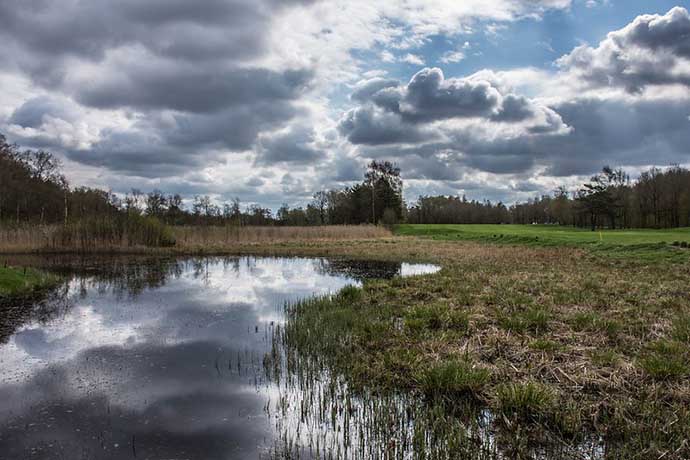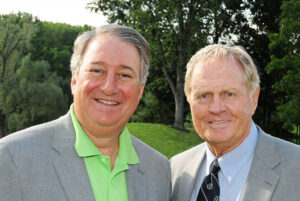Course Set-ups Often Penalize Women Players
Neil Self coaches the women’s golf team at the University of North Alabama.
It’s a fledgling program in only its third year of existence and was added when the school, located in Northwest Alabama, opted to upgrade athletics from the NCAA Division ll level to Division I.
The Lions, members of the ASUN Conference, have shown improvement each year, but it’s still been a struggle to bring their scores down to where they can be competitive with other mid-major programs.
As golf, even on the women’s college level, has become more of a power game, Self’s team does not have a team of bombers off the tee. And, that lack of distance is often reflected in the team’s scores which generally range from the low 300s to high 320s.

“We’re probably below average (in distance),” said Self, who played at LSU and Birmingham-Southern during his college playing days. “The really good players are carrying the ball 240 or 250 off the tee. The average carry off the tee (in mid-major women’s golf) is probably around 200 yards. We are average or a little below average.”
It was only recently when Self stepped onto the black tees at the Robert Trent Jones Golf Trail at the Shoals Fighting Joe course did he realize what his women’s team members face week-in and week-out in their tournaments.
For UNA Women, Playing Overly Long Courses is a Slog
Those black tees on Fighting Joe check in at nearly 8,100 yards. For an accomplished former college golfer like Self, that means instead of hitting 8-irons, 9-irons and wedges into par-4 greens, he hits long irons, hybrids and an occasional 3-wood. He can’t reach the par 5s in two, and there are no risk-reward drivable par-4s.
In other words, it’s a slog from the get-go. Also, instead of being fun, it’s exhausting.
“The only time I feel like I am playing a course similar to them is when I play the black tees out there,” he said of Fighting Joe. “I played it mid-summer. Every shot had 5-iron, hybrid or 3-wood in, and I was like this is what they are playing. It’s hard. At the end of the day, I am tired. It’s not much fun.”
Self has his team play from the white markers on Fighting Joe which measure what seems to be a short 6,154 yards in comparison to the 7,300-plus yard courses the men’s teams play. However, that yardage for the women’s college golfers is about the equivalent of playing from the course’s black tees.
The NCAA minimum yardage for a tournament to be considered official is 5,800 – not all that much shorter than what the Lions play.
Few Chances at Birdie

For UNA players Tori Roush and Hannah Pope, playing what amounts to the black tees in the women’s game in just about every tournament they play – long courses in difficult conditions. They don’t complain – after all, everybody is playing the same course in the same conditions. They just would like a chance to be able to have some scoring clubs in their hands on some holes and be able to take a run at the occasional par 5.
“You should be able to hit all of your clubs equally well, but I feel like it is a lot less pressure whenever you have a pitching wedge or 9-iron into the green rather than like a hybrid,” Roush said. “All of these courses I’m hitting hybrids into greens. I’m not hitting my driver that short, but I could have the same distance in as a guy and he would be hitting 8- or 9-iron in.”
Roush said her average carry distance on drives is around 200 yards. With firm conditions, the ball usually rolls out to 220 or 230 yards.
“That’s not very long, but it should still be long enough to get me out there to have an OK club into the green,” she said.
Are Set-ups Holding Back Women’s Golf?
Beth Ann Nichols of Golfweek and USA Today did extensive research comparing the men’s and women’s games for a mid-March story. She examined data across both the men’s and women’s top professional tours and came to the conclusion that misguided course setups are holding back women’s golf instead of advancing it.
Among the data Nichols uncovered is that on the PGA and LPGA tours, 2020 players of the year Dustin Johnson and Sei Young Kim perform almost identically with similar irons in their hands. Johnson typically hits a 5- or 6-iron between 200 and 225 yards. His average proximity to the hole was 33.4 feet. Kim hits her 5- and 6-irons between 165-185 yards. Her average proximity was 32.5 feet from the hole. With wedges, the numbers are nearly identical as well.
The underlying issue is whether tournament officials, including those in the NCAA, take in account the yardage discrepancy. Outside of the Power Five conference schools, rarely do many women’s teams or individuals finish under par in tournament play in comparison to their male counterparts.
In six recent mid-major conference championships, a total of four teams finished under par in those tournaments. Only one course on which those tournaments were played was under 6,000 yards according to GolfStat, and that was played at 5,987 yards.
Obviously, part of the issue is that the depth of talent across the women’s game falls short of the men’s game. But a lot of it can also be attributed to course set-ups that leave many of the women’s players at the lower levels of college golf struggling to hit par 4s and rarely with an opportunity to attack a par 5 green in two. Even more rare is a risk-reward drivable par-4.
Struggling to Reach Par 4s in Regulation

Pope said there has only one par 5 in her college career that she was able to reach in two.
“The only reason was because the hole was straight downhill and the ground was so hard it hit and just ran,” she said. “Guys have that opportunity all the time, and a lot of times they are hitting irons.”
Another factor that plays in in the course setup debate is weather conditions. Often in the spring, courses remain soggy due to weekly rain and often players must endure breezy conditions. Those issues can make a 6,100-yard course play seemingly 6,400 or 6,500 yards.
“Sometimes I don’t think they think about it because there are some holes that are not even reachable,” she said. “They should be thinking about every golfer, giving every golfer a fair chance and not just focusing on the longer hitter. There are several holes that I have to tell myself I am going to play this par 4 as a par 5. If I make bogey here, that’s good for me.”
Self points to a pair of tournaments this year as examples of officials possibly not taking into consideration playing conditions. In both tournaments the wind direction changed and there were par 4s that no one on his team could reach in regulation.
“That’s frustrating,” he said. “It’s all dependent on which way the wind blows if you can get to the green in regulation or not. It takes adjusting and the players are mad out there because they are not playing that bad and you are scrambling to shoot 79. It’s totally different.”
More Fun at 5,500 to ,600 Yards
Self emphasizes that he is not complaining. He knows he must continue to grow the program and the players have must improve.
“The courses are fine for Power 5 programs who have the best 100 players in the world,” he said. “They are fine for us – I’m not complaining. I just think it would be more fun at 5,500 or 5,600 yards. If the greens complexes are difficult, the scores wouldn’t be crazy low. And, what would be wrong if scores were lower? It’s just more fun when you are putting for birdie instead of par.”
Andy Priest, executive director of the Alabama Golf Association, explained his organization’s philosophy about course setups. He said there is no one-size-fits-all approach when it comes to setting up a course.
“Our course setup philosophy for Alabama Golf Association events, whether female or male, is to match yardage, hole locations and set-up with the ability level competing in that competition,” he said. “We conduct events for all skill levels from two-person scrambles to state amateur championships to USGA national championship qualifying. Fixating on yardage singularly does not accurately address the playability and difficulty of a golf course.”
Priest correctly points out that “a 6,000-yard golf course at the coast plays differently than a 6,000-yard course in the northern part of the state.”
“Green speeds, rough heights, wind, turf quality and firmness should all be considered as part of an overall course set-up,” he said. “Hole locations alone affect the yardage and difficulty that a course plays day-to-day. We adjust teeing areas to compensate for hole location difficulty to match the required approach shot into that green complex. Our staff evaluates each course daily, the event’s skill level and participant ages then implement a course set-up appropriate for that competition under the given conditions.”
Self would love to see that criteria used at the tournaments in which his team is competing. But it often falls short, in part because organizations such as the AGA are not in charge of regular-season tournaments. The host schools are. He’s had to adjust his thinking when it comes to scoring.
“I just thought we were playing terribly,” he said. “Coming from the men’s game, I just wondered if it was that much different or is it just harder?”
More Discussion Needed on Course Lengths for Women
“I always thought the courses were set up to where they would be OK if it was a calm day and 72 degrees,” Self said. “But it never is in college golf. You wake up at 7:30 in the morning and the wind is blowing 15. That’s just too hard. Playing around 6,100 yards would be fine if they were flat and running out and the greens complexes were relatively easy at that distance. But we play courses where the greens complexes are severe or too firm. We show up at a tournament and in the practice round we know the course is going to be a beast. It’s managing expectations instead of game planning. As a golfer it’s disheartening when you are out there battling and playing well and you are 5- or 6- over par.”
Self would like to see the discussion continue,
“It deserves discussion and people smarter than me figuring out the strokes gained and clubs coming in to make it more fun,” he said. “Try to make it more of a variety of the game. When you have 80 to 100 yards in, the variety of shots you can play is according to the green. When you are 155 yards out and you are ripping 4-iron or 5-iron, it’s just execution. You are trying to hit a driving range stock 5-iron. Variety would be good other than just raw distance.”
To be clear, nobody is saying that every hole at every tournament should be a driver and wedge. But for players like Roush and Pope, a little spice would be nice.
“I was looking at the scorecards for one of the guys’ tournaments and saw some people were making eagles,” Pope said. “I looked at the yardage and they had (a par 4) that they could reach and run the ball up onto the green. We will never have that opportunity.”
“If the tees were pushed up on some holes, it would make a huge difference,” Roush said.
Gregg Dewalt is the editor of Alabama Golf News.
Have a story idea or a news item to report? Email bamagolfnews@gmail.com
Featured image: Finn Terman Fredericksen via Flickr













